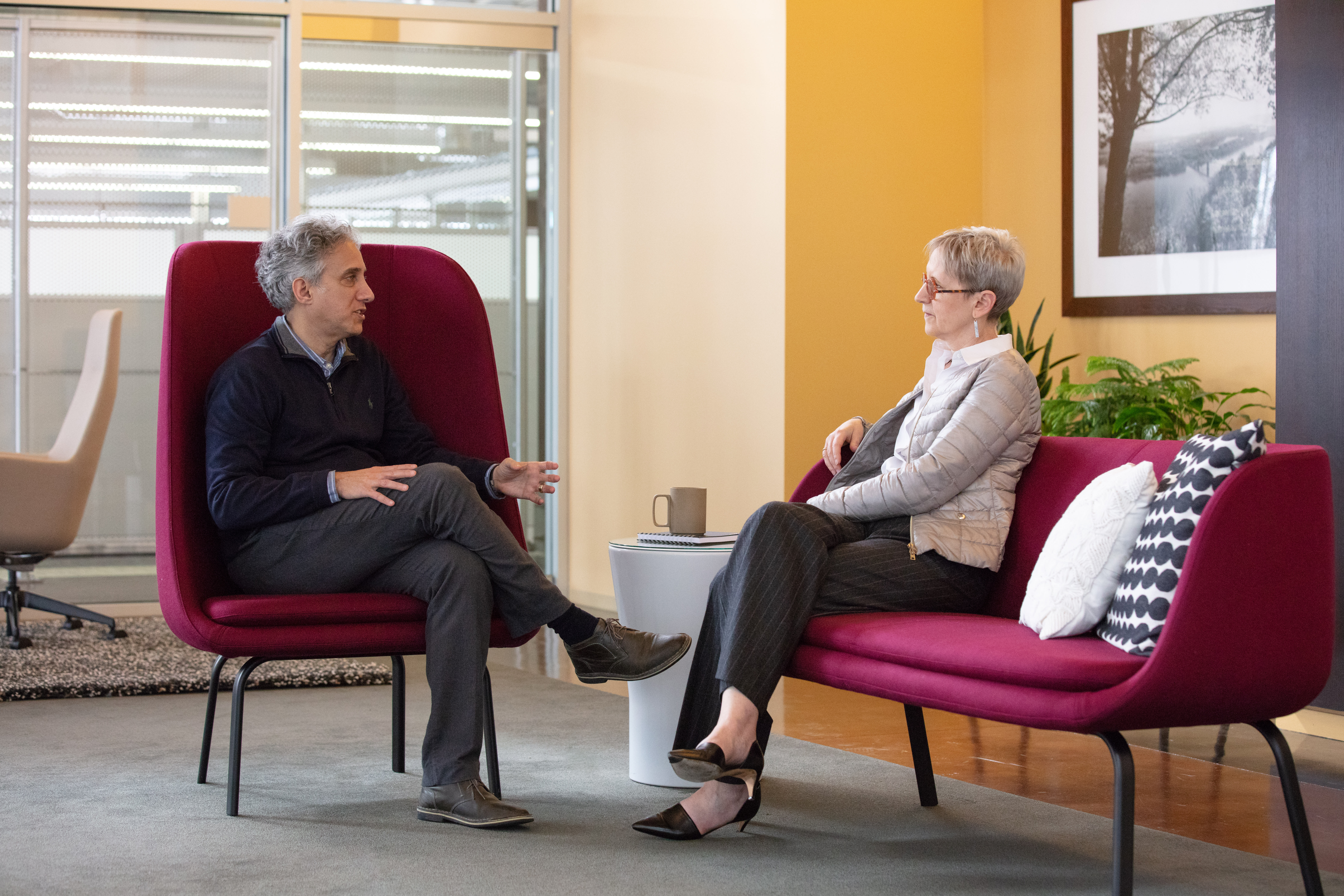Download the PDF Copy
Download
This is the first in a series of six posts about social cohesion, an emerging idea about organizational success that will shape the future of workplaces.
Jeff Leitner: We need a new north star. In the midst of unprecedented uncertainty — about our jobs, organizations, communities, and economy — we need something to guide us to and through whatever’s next.
The old north stars won’t do it for us. An article published before normal went off the rails this year said there were eight ways to increase productivity, including “be efficient” and “reduce distraction.” In just a few months, that benign advice seems antiquated, as our workforces are distributed and our lives are a cacophony of distractions.
Jan Johnson: We have the same challenge in workplace design. Our standard metrics—which are oriented to cost and space—like square footage per employee—don’t make sense now. And they never reflected how the built environment contributes to value creation.
Jeff Leitner: So when the chaos was unleashed earlier this year, I looked around for clues as to which organizations would survive this economic meltdown and thrive on the other side. I looked for clues everywhere my clients and friends worked. And a pattern began to emerge. The organizations that seemed to be doing better than others had two things in common: cash and social cohesion.
Jan and I will leave it to others to talk about cash. We’re here to introduce you to social cohesion.
Jan Johnson: I knew how important and powerful social cohesion is when Jeff and I started talking about it. Allsteel sponsored a study a few years ago which found social cohesion as the factor most tightly linked to knowledge worker teams’ productivity. And the more we talked, the clearer it became that social cohesion is that north star we need now — for both organizational success and workplace design.
Jeff Leitner: Here’s why social cohesion is so promising: in addition to being the best predictor of team productivity, it’s linked to better individual performance, more motivation, increased employee engagement, higher learning outcomes (though only among high IQ employees), and more resilience in the face of fear, stress and anxiety. Social cohesion is also negatively correlated with burnout and social loafing, which is scientist-speak for not pulling your own weight.
This is a gold mine of benefits. If there were a single food that made us more productive, improved our performance, increased our motivation, made us smarter, and helped us stay calm in the midst of chaos, we’d all eat it every day.
So what exactly is social cohesion? In short, it’s sticking together to chase a common goal. In sports, it’s that vague and mysterious “team chemistry” that explains how a group can win without the very best talent. Everywhere else, social cohesion is the science behind a successful culture. Consider the ubiquitous Maslow hierarchy of needs. Social cohesion is the beating heart of his model — the love, belonging, and esteem that connect basic human needs and security to ultimate self-actualization.
Scientists have been studying social cohesion for several decades, but not in relation to our organizations. Instead, it’s been a way to measure countries. In the most recent ranking of the world’s nations by social capital — which the researchers associated with social cohesion — the United States ranked number 142 out of 180. This places the world’s largest economy 141 slots behind Finland, 101 behind Canada, 57 behind Mexico, and one ahead of South Sudan. I’m guessing that given how chaotic everything feels right now, you’re not surprised by this.
Jan Johnson: In subsequent posts in this series, we’re going to dig into a few things: how to evaluate social cohesion in your organization, the four critical dimensions of social cohesion, and how we can support social cohesion by adding new tools to the design process.
As for the workplace, there’s a lot of buzz about what it might look like when some or all of us return to the office. Let’s resist the temptation to make it a maze of plexiglass and higher walls around workstations, and look to this new north star of social cohesion.
In our next post, we’ll talk about how to assess social cohesion in your organization.
To join Jeff and Jan for a presentation on social cohesion and the potential of workplace design, write Jan Johnson at JohnsonJan@allsteeloffice.com. If you want a head start, you can take the social cohesion assessment here. You can also learn more about the subjects they’re covering in this series here.
Jeff Leitner is a social innovator and theorist. He is founder and lead researcher at Unwritten Labs, a fellow at New America, and former innovator in residence at the University of Southern California. Jan Johnson is a workplace strategist and designer. She is vice president of workplace strategy at Allsteel, former chair of the Council for Interior Design Accreditation and teaches the three MCR.w classes for CoreNet Global.






